Speed up your data transformation with Databricks, the world’s number one unified data analytics platform, and enable your organization to generate meaningful insights out of masses of data. With Databricks, businesses are able to simplify their data pipelines, automate data engineering tasks, and integrate machine learning-all within a secure, scalable infrastructure.In that aspect, as a data scientist, an engineer, or a business leader, LinkedIn ads ensure that you’re fit to drive innovation and efficiency with Databricks.
With Databricks, tap into the power of AI and real-time analytics to uncover the true value of your data-from building rich customer experiences to optimizing workflows. Databricks is one of the facilitators of enterprise growth in this ever-changing, data-driven world.
With this article, get a step-by-step guide to connect LinkedIn Ads to Databricks effectively and quickly.
Table of Contents
Method 1: Automate the Data Replication process using Hevo
Step 1: Configure LinkedIn Ads as a Source
Choose LinkedIn as a source.
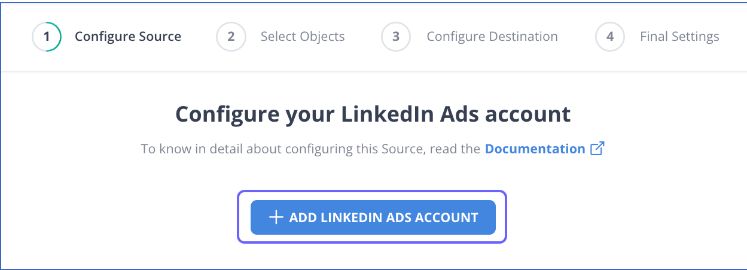
Step 2: Configure Databricks as a Destination
Choose Databricks as destination.
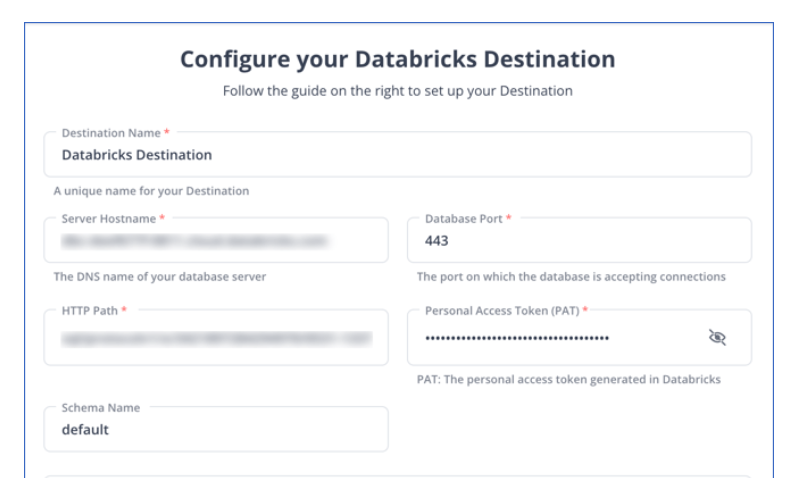
Once your LinkedIn Ads to Databricks ETL Pipeline is configured, Hevo will collect new and updated data from LinkedIn Ads every five minutes (the default pipeline frequency) and duplicate it into Databricks. Depending on your needs, you can adjust the pipeline frequency from 5 minutes to an hour.
Data Replication Frequency
| Default Pipeline Frequency | Minimum Pipeline Frequency | Maximum Pipeline Frequency | Custom Frequency Range (Hrs) |
| 1 Hr | 15 Mins | 24 Hrs | 1-24 |
In a matter of minutes, you can complete this no-code & automated approach of connecting LinkedIn Ads to Databricks using Hevo and start analyzing your data.
Why consider Hevo
- Fully Managed: You don’t need to dedicate time to building your pipelines. With Hevo’s dashboard, you can monitor all the processes in your pipeline, thus giving you complete control over it.
- Data Transformation: Hevo provides a simple interface to cleanse, modify, and transform your data through drag-and-drop features and Python scripts. It can accommodate multiple use cases with its pre-load and post-load transformation capabilities.
- Faster Insight Generation: Hevo offers near real-time data replication, so you have access to real-time insight generation and faster decision-making.
- Schema Management: With Hevo’s auto schema mapping feature, all your mappings will be automatically detected and managed to the destination schema.
- Scalable Infrastructure: With the increase in the number of sources and volume of data, Hevo can automatically scale horizontally, handling millions of records per minute with minimal latency.
- Transparent pricing: You can select your pricing plan based on your requirements. Different plans are clearly put together on its website, along with all the features it supports. You can adjust your credit limits and spend notifications for any increased data flow.
- Live Support: The support team is available round the clock to extend exceptional support to its customers through chat, email, and support calls.
See how to connect LinkedIn Ads to Snowflake for better data management. Explore our guide for easy setup and enhanced performance.
Method 2: Replicate Data from LinkedIn Ads to Databricks Using CSV
To start replicating data from LinkedIn Ads to Databricks, firstly, you need to export data as CSV files from LinkedIn Ads, then import the CSV files into Databricks and modify your data according to the needs.
- Step 1: Firstly, you need to sign in the Campaign Manager. Click the tab on top of the page to select export on campaign level or click the account name on the upper-left corner to select export on the account level. Click the Export button after confirming the time range at the top right of the page. You need to select the Report Type in the pop-up window. Based on the report type few customizations are available. Finally, click Export.
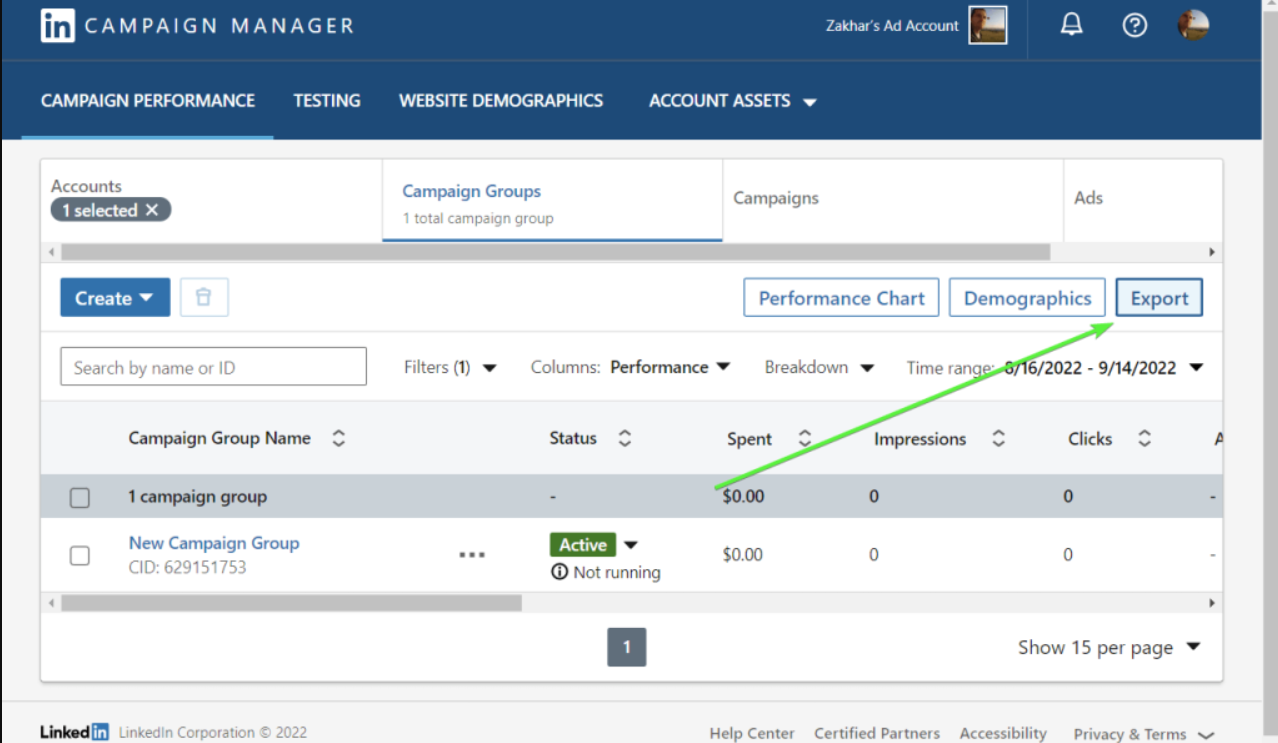
- Step 2: In the Databricks interface, you need to click on the Data button while scrolling through the side menu. You can browse the files on your local computer, click Create Table or drag and drop the CSV files into the drop-down menu and upload them. Your path will look like this:
/FileStore/tables/<fileName>-<integer><fileType>. Once the file is uploaded, simply click the Create Table UI button to view your data.
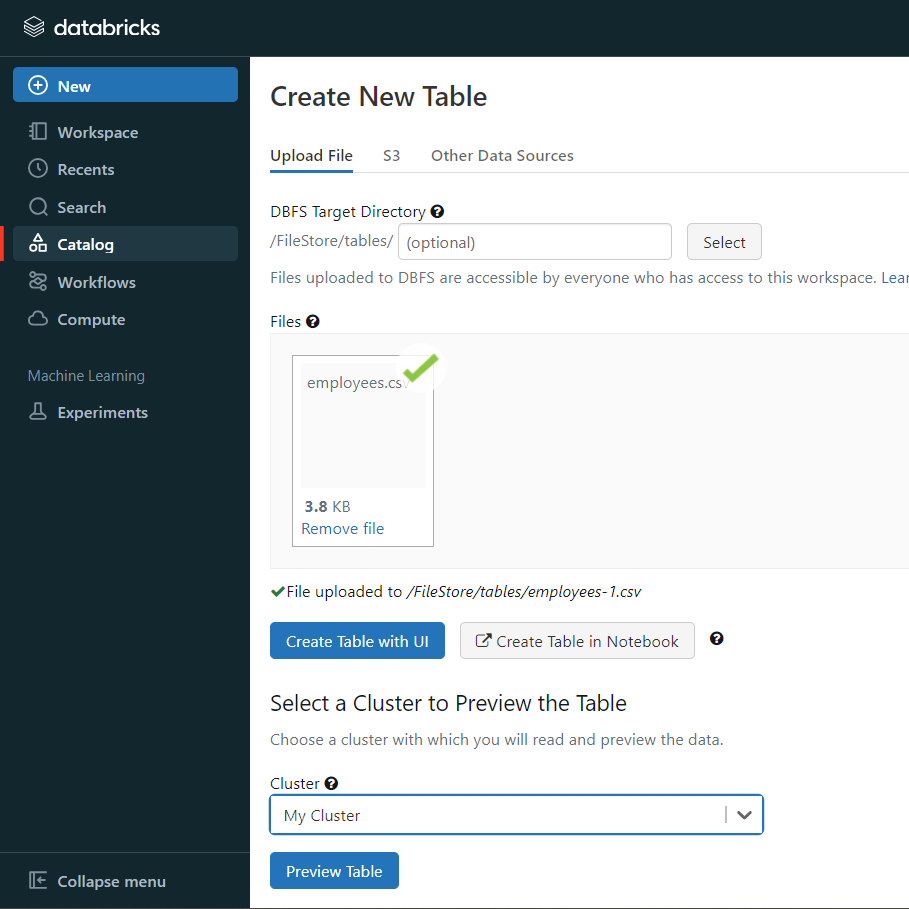
- Step 3: The CSV data can be modified and read after you have uploaded the data in a table in Databricks.
- Click on Preview Table after selecting a Cluster. You can now read your CSV data in Databricks.
- In Databricks, the data types are string by default. You can change the data type to the appropriate one from a drop-down list.
- The data can be easily modified with the help of the left navigation bar. The left navigation bar has the following options; First Row Header, Multi-line, Table Name, File Type, and Column Delimiter
- Click on Create Table, once all the above parameters are configured.
- The CSV files can be read easily from the cluster where you have uploaded that file.
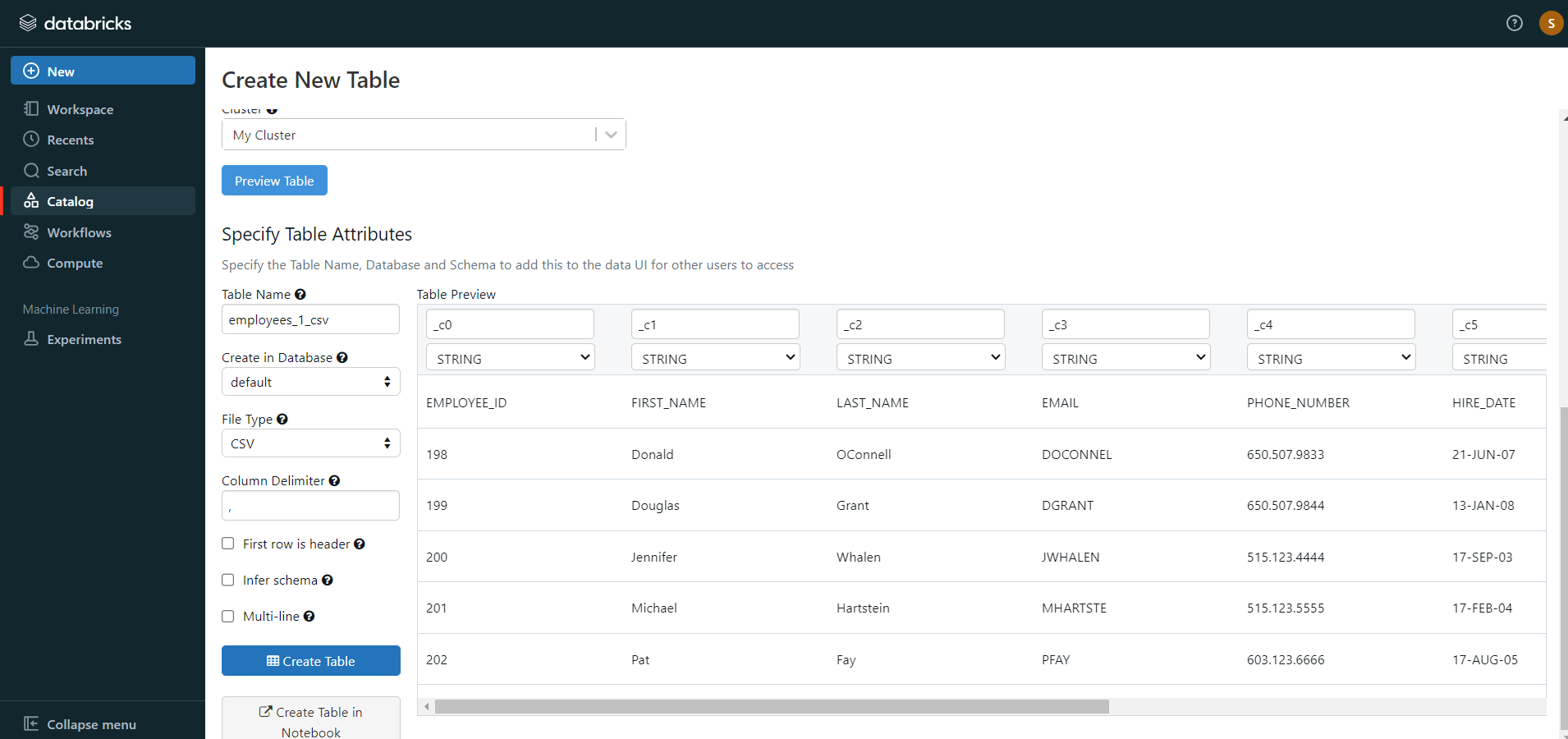
This 3-step process using CSV files is optimal for the following scenarios:
- One-Time Data Replication: When your marketing team needs the LinkedIn Ads data only once in a long period.
- No Data Transformation Required: If there is a negligible need for data transformation and your data is standardized, then this method is ideal.
In the following scenarios, using CSV files might be cumbersome and not a wise choice:
- Frequent changes at Source Data: You will need to perform the entire process frequently to access updated data at your destination.
- Time Consuming: If you’re exporting your data regularly, then the CSV method might not be a good fit since it takes a significant amount of time to replicate data using CSV files.
When the frequency of replicating data from LinkedIn Ads increases, this process becomes highly monotonous. It adds to your misery when you have to transform the raw data every single time. With the increase in data sources, you would have to spend a significant portion of your engineering bandwidth creating new data connectors. Just imagine — building custom connectors for each source, transforming & processing the data, tracking the data flow individually, and fixing issues. Doesn’t it sound exhausting?
How about you focus on more productive tasks than repeatedly writing custom ETL scripts? This sounds good, right?
What Can You Achieve by Migrating Your Data from LinkedIn Ads to Databricks?
Here’s a little something for the data analyst on your team. We’ve mentioned a few core insights you could get by replicating data from LinkedIn Ads to Databricks. Does your use case make the list?
- What percentage of customers from a region have the most engagement with the product?
- Which features of the product are most popular in a country?
- Your power users are majorly from which location?
- How to make your users happier and win them over?
- What are the custom retention trends over a period of time?
You can also read more about:
- Segment to Databricks
- Databricks Snowflake Connector
- Databricks to Salesforce
- Azure MySQL to Databricks
Summing It Up
Exporting and importing CSV files is the right path for you when your marketing teams need data from LinkedIn Ads once in a while. However, a custom ETL solution becomes necessary for real-time data demands such as monitoring campaign performance or viewing the recent user interaction with your product or marketing channel. You can free your engineering bandwidth from these repetitive & resource-intensive tasks by selecting Hevo’s 150+ plug-and-play integrations.
Want to take Hevo for a ride? Try for Hevo’s 14-day free trial and simplify your data integration process. Check out the pricing details to understand which plan fulfills all your business needs.
Share your experience of replicating data from LinkedIn Ads to Databricks! Let us know in the comments section below!
FAQs
1. What are the rules for LinkedIn ads?
LinkedIn ads must follow LinkedIn’s advertising guidelines, which prohibit misleading content, illegal products, and inappropriate language. The ads should be professional, relevant, and add value to the audience.
2. What are the limits for LinkedIn ads?
There are character limits on LinkedIn ads. For example, headlines are typically limited to 70 characters, and descriptions to 600 characters, depending on the ad format.
3. Can you target LinkedIn ads to specific companies?
Yes, you can target specific companies on LinkedIn using the “Account Targeting” feature, allowing you to focus your ads on decision-makers in those businesses.









